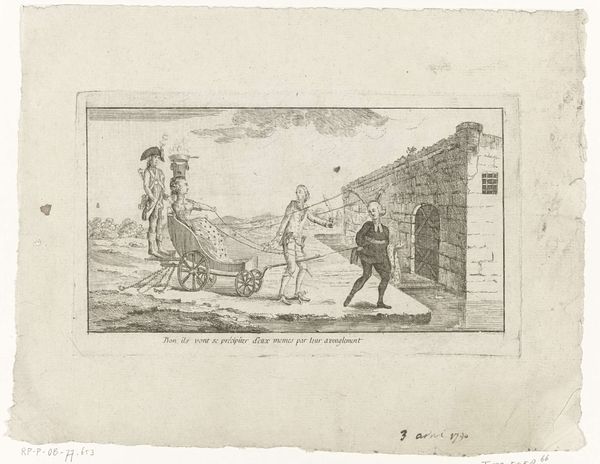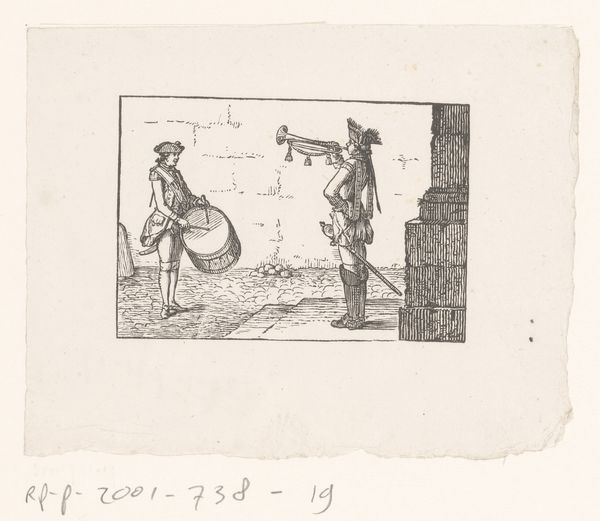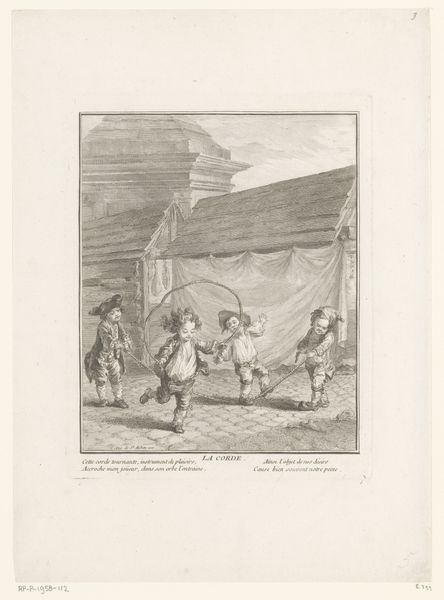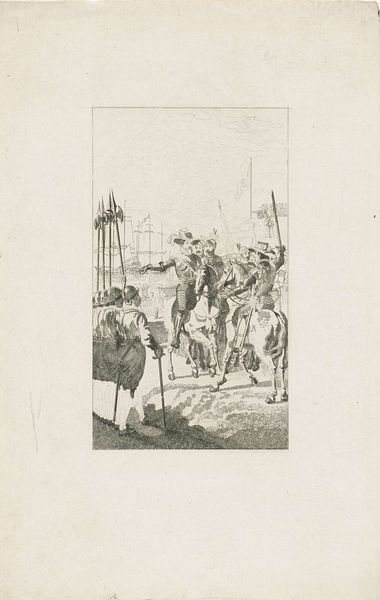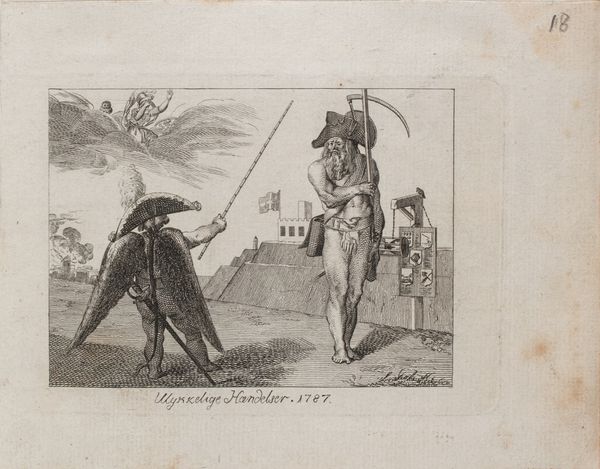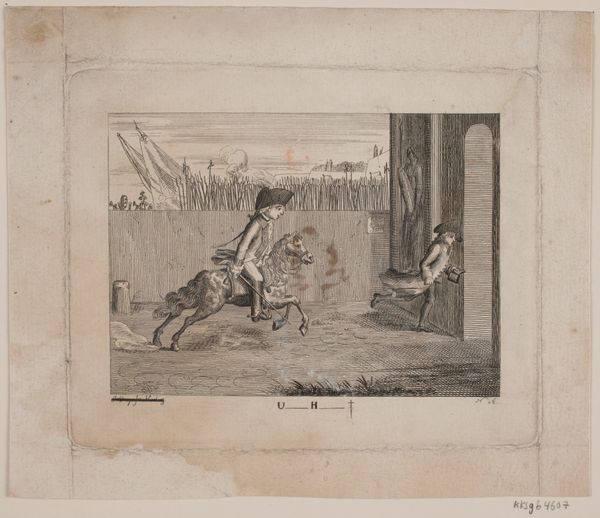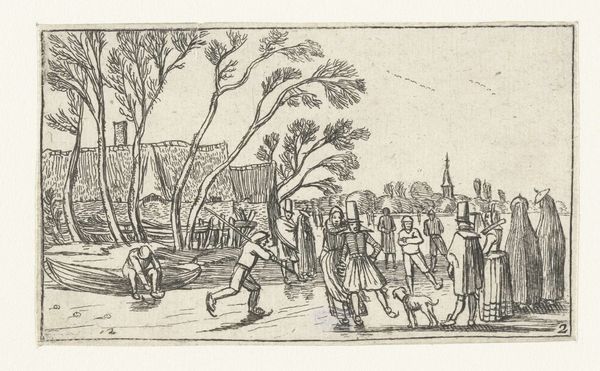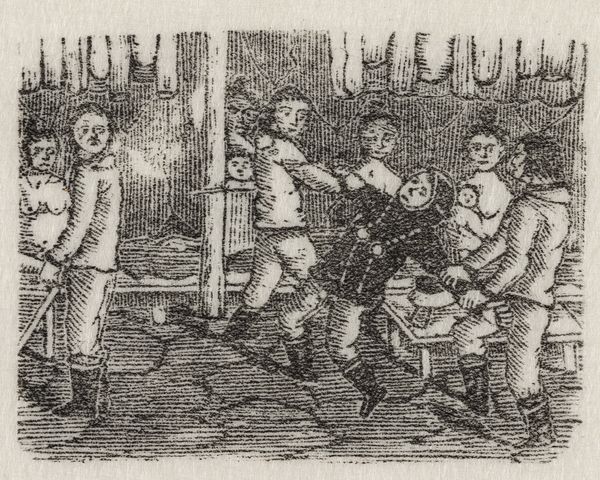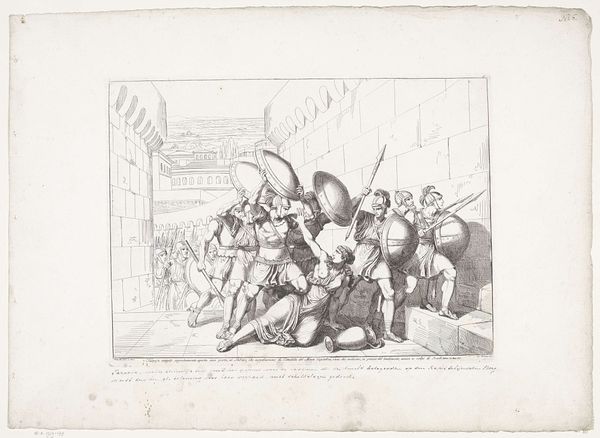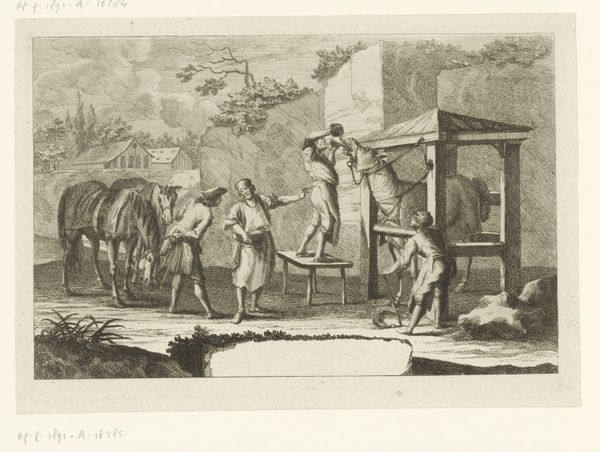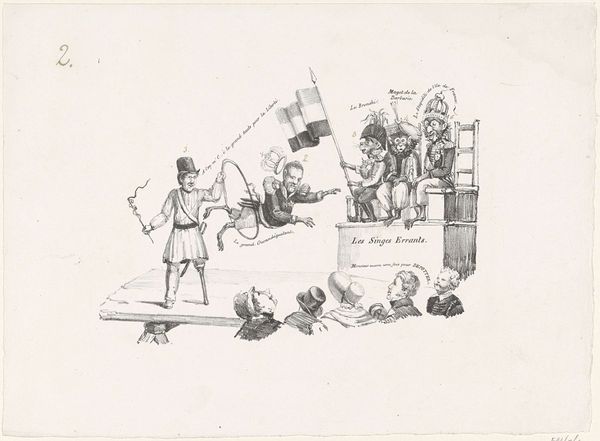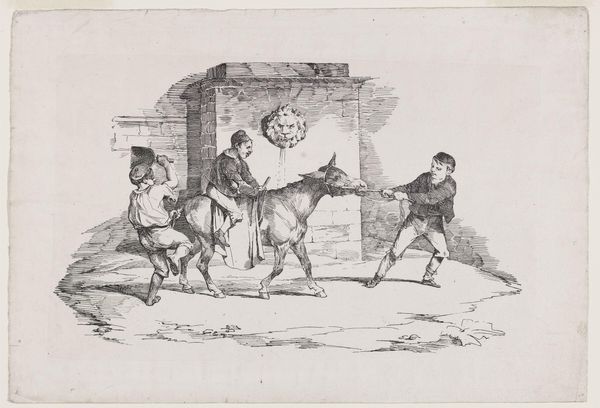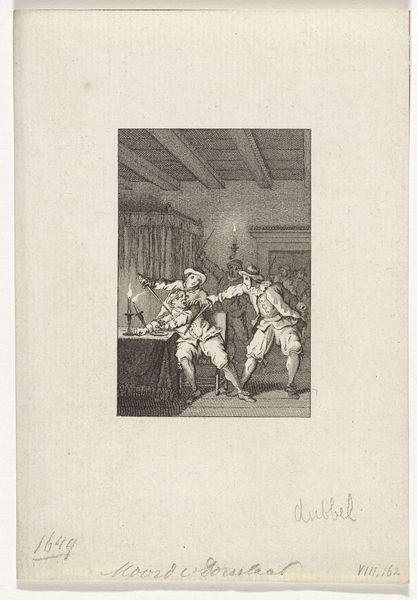
Ontmoeting van een bisschop (?) en soldaten voor een kasteel of stadspoort c. 1656 - 1657
0:00
0:00
drawing, ink
#
drawing
#
baroque
#
dutch-golden-age
#
pen sketch
#
ink
#
genre-painting
#
history-painting
Dimensions: height 45 mm, width 71 mm
Copyright: Rijks Museum: Open Domain
Editor: Here we have Moses ter Borch’s “Ontmoeting van een bisschop (?) en soldaten voor een kasteel of stadspoort”, made around 1656-1657. It's a pen and ink drawing, currently housed at the Rijksmuseum. The line work gives it such immediacy. How do you interpret this work through the lens of its materials and context? Curator: This drawing, rendered with such directness in pen and ink, presents an opportunity to consider the means of its production. Ter Borch’s choice of a relatively accessible and portable medium—pen, ink, and paper—suggests a focus on documentation and dissemination, rather than a precious art object intended solely for elite consumption. Editor: That's an interesting perspective. So the ease of materials shaped the work? Curator: Precisely. We might ask: what was the social function of this kind of rapid sketch? Was it a study for a larger, more elaborate work? A record of current events? Or something circulated among a specific audience, perhaps within a military or political circle? Thinking about the materiality and accessibility broadens our understanding. Also, consider the economic relationship between patron and artist and the labor involved to create even simple sketches like these. Who had the luxury of time and resources to produce and consume such images? Editor: It shifts the focus away from just the depicted narrative, right? I’m rethinking how these works were conceived within a network of resources and labor. Curator: Indeed. It challenges a focus on artistry to consider networks of production and circulation within specific historical conditions. That way we approach history painting, typically considered an elite art form, more critically. It highlights the complex social relationships inherent in artmaking. Editor: So, by looking closely at the process, we can better understand the artist’s position and the artwork's role in its time. Thank you! Curator: My pleasure. Considering materiality allows us to move beyond appreciation to critical understanding.
Comments
No comments
Be the first to comment and join the conversation on the ultimate creative platform.

